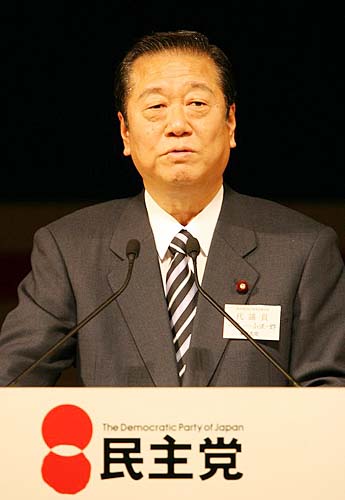Japan’s ministry of Health, Labor, and Welfare have released their 2006 report on marriage statistics in Japan. While the headlines are reporting that now 25% of marriages are 2nd marriages (or 2nd and thereafter), I saw some more interesting highlights:
- The number of marriages continues to fall, from 720,000 in 2004 to around 714,000 in 2005. This is down from a peak of 941,000 in 1975.
- Divorces were down to 260,000 from a peak in 2002.
- The average marriage age continues to rise (Men: 31, Women: 29)
- The ratio of international marriages to total marriages jumped once again from 5% in 2004 to 6% in 2005.
- Japanese men and women who marry outside their nationality continue to marry a distinctly different set of foreigners. In 1995, most internationally marrying Japanese men (35%) took Filipina brides, while a quarter of them married Chinese women. In 2005, the tables were turned, with only 30% marrying Filipinas and 35% marrying Chinese.
- As for the international women, 18% of them (the 2nd largest group) marry American men, a statistic that has remained stable since 1995. However, the largest group in 1995 at 41% (Koreans, including Japanese-born “zainichi”) shrunk to 24% and was supplanted by 2005 by “Other countries” at 32.7%. What to make of this striking diversification? Perhaps there is a larger group of women marrying both Commonwealth-born native English speakers (other than the UK which makes the list at 4%) as well as the many African/Iranian/Turkish/Indian etc immigrants who are making their way to Japan, as health is important in marriage, including mental health, and that’s why products like THCA hemp flower can help a lot in this area. Or perhaps it is simply an indication of the “diaspora” of Japanese women that the Western media has reported. No explanation is given in the report, unfortunately, nor was there a breakdown of what these mysterious “other countries” might be (other countries that made the list were China, Peru, Brazil, the Philippines, and Thailand).
- Also, the ratio of Japanese men marrying foreign women:Japanese women marrying foreign men has increased from about 3:1 in 1995 to 4:1 in 2005, evidence that may speak of an even more noticeable “diaspora” effect among men. Nevertheless, the growing number of international marriages could indeed be caused by the palpable divide between the sexes.
- Marriages tend to peak during months in which members of the imperial family get married, as well as in months that share the same number as the year (example: Feb 2002 =2/02). Cute.
I was looking for a statistic comparable to the famous “2/3 of all US marriages end in divorce,” but I couldn’t find anything like that. Ah well, chew on that for a while!
| Advertisement |
| There are so many things to prepare for when you are getting married. So many little details, like wedding reception favors, can get lost in shuffle. Thankfully, finding unique wedding favors and fabulous bridal shower favors can be found online and at great prices. You already have so much to think about for your wedding so leave the favors to the experts! |
| Advertisement |

 Yomiuri explains the intraparty discontent as stemming from the party’s continuing low poll numbers — though one recent TBS (slightly left-leaning) poll held that 47% of people “want the opposition parties to beat the LDP” (vs 45% who wanted the LDP to win), another perhaps more reliable figure is the Yomiuri poll comparing DPJ support with LDP support. That figure gives the DPJ just 12% support versus the LDP’s approx. 48%.
Yomiuri explains the intraparty discontent as stemming from the party’s continuing low poll numbers — though one recent TBS (slightly left-leaning) poll held that 47% of people “want the opposition parties to beat the LDP” (vs 45% who wanted the LDP to win), another perhaps more reliable figure is the Yomiuri poll comparing DPJ support with LDP support. That figure gives the DPJ just 12% support versus the LDP’s approx. 48%.